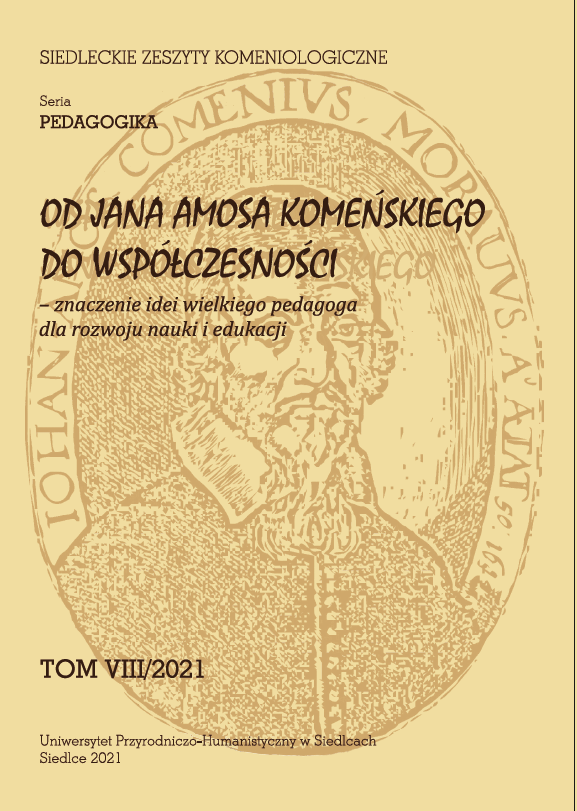"Nowy komeniusz" Jana Chrzciciela Mieroszewskiego. Jego związki z pansofią Komeńskiego
Słowa kluczowe:
Jan Amos Comenius, pansophism, silva rerum, encyclopeadism, Jan Chrzciciel MieroszewskiAbstrakt
The article analyses The New Comenius, a work by a little-known 19th-century Polish writer, Jan Mieroszewski. The title itself indicates a connection with the works by John Amos Comenius due to the appellativization of the scientist’s name. The author lists multiple affinities in the content, composition and form of the Polish "Comenius" with Orbis Pictus and other works by the outstanding Czech educator, and above all, with his idea of pansophism. He mentions the illustrative method of transferring knowledge and the encyclopaedic tendency to collect and systematize it. At the same time, he proves that Comenius' concepts influenced the development of the Polish prose of the seventeenth century, which assumed the silvic formula of a collection of varieties useful in the lives of educated people. Mieroszewski's book is a continuation of this trend of writing, which combined genealogically contradictory patterns of silva rerum and the encyclopaedia. Despite its literary nature, it retains the value of a textbook or lexicon, which was intended to convey wisdom in a universal dimension, relating to the spheres of self-knowledge, the world of universal and transcendent things, as Comenius had assumed. Undoubtedly, the analysed text confirms the viability of the scholar's concept in the Polish intellectual and literary culture of the nineteenth century.




